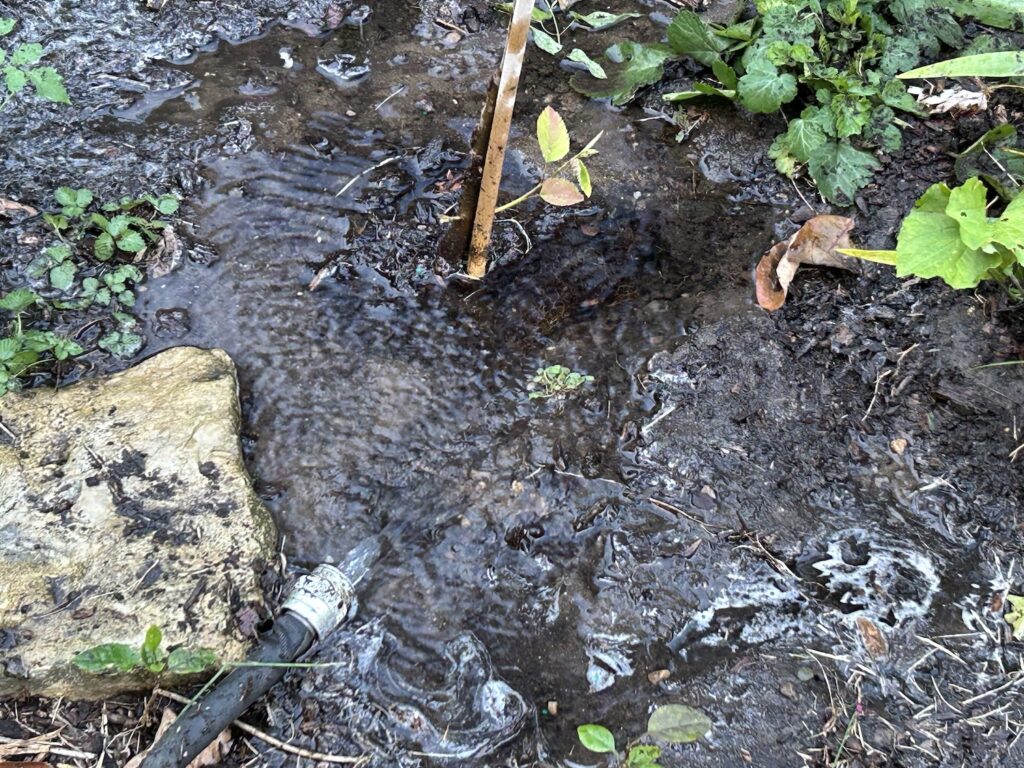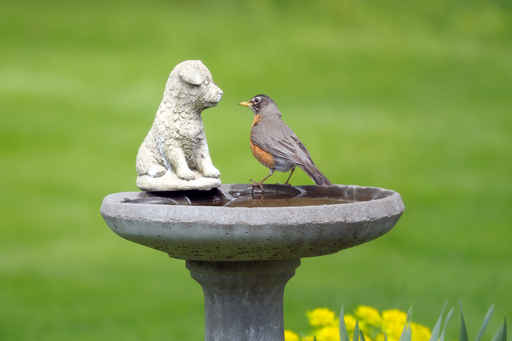
There are some things to do – and not do – to minimize plant damage. The main thing to keep in mind is that plants are already stressed with the heat and humidity. So, the last thing we want to do is add more stress. Watering is key.
Containers
Water your container plants regularly. That will likely need to be watered daily, depending on their location, what’s growing in them and what the pots are made of. Water until it runs out of the bottom of the pot. Don’t allow the pot to sit in a saucer full of water for more than about 30 minutes.
If the soil is not taking up water (called hydrophobic), allow the container to remain on the saucer – adding water periodically – so the soil can take up the water. Or place pots in buckets or other device to allow the soil to absorb water.
Hanging baskets
These containers are especially susceptible to damage during these conditions. Their decline is a lack of water and (likely) a windy location. The later, especially, affects plants in hanging baskets. Some gardeners take down the hanging baskets during the day to reduce the damage. Hanging baskets may need water twice a day.
Trees and shrubs
Pay particular attention to newly planted trees and shrubs. These long-lived woody plants are a significant investment compared to perennials and annuals.
Trees and shrubs usually need deep watering at least once a week. But you might have to double that during in these conditions and into fall. You want new plants to go into fall and winter well-watered. Usually drip irrigation does not work well in this situation. Photo above shows watering a newly planted serviceberry (Amelanchier spp.) last summer.
Even mature trees and shrubs can be stressed in this weather. So give them an occasional good soaking, especially as they go into fall and winter.
Vegetables
Probably the most worrisome garden plants in weather like this are the veggies. We’ve started them from seeds or purchased transplants and fretted getting them in the ground, what with the rainy, chilly spring we had. You might have to double up your watering of food plants. If you water usually once a week, consider watering twice a week, for instance. Always water at the base of the plant where the roots are.
Perennials and annuals
Water these in-ground plants weekly or twice a week. Water the base of the plants rather than overhead. Some plants, such as bedding impatiens (Impatiens walleriana), may need more frequent watering.
A lot of people think native perennials and annuals don’t need supplemental watering during heat waves. I think these plants are not in their natural habitat. They could be stressed by being in a different soil, or light exposure, and threatened by attacks of insects or diseases, so if watering native plants keeps them happy, well, I’ll leave that to you.

What about the birds and bees?
Birds and other wildlife benefit from bird baths that are filled with water in weather like this. Birds, squirrels, bees and many other fauna can use a drink now and then.
For bees, keep a stone, stick other material in the bird bath where they can land and drink with out drowning.
What not to do
When you see a plant struggling, the second thought (after watering) is it might need fertilizer. The plants already are stressed from the heat and humidity, so pushing growth with fertilizer is not a good idea.
Avoid pruning trees and shrubs. Pruning also activates new growth on plants and that’s stress. It’s also stressful for plants to heal the cut wounds.
Over watering
Plants are pretty good at letting us know when they need water. Usually their leaves wilt or lay flat against the plant. However, wilting doesn’t always mean it’s thirsty. Plants do that, usually when exposed to sun, to reduce moisture loss in their leaves, called transpiration.
I remember another heat wave years ago when people were concerned about their well-watered plants dying. I was working at a garden center and several customers brought in plants – whole plants – that were pretty much dead.
The plants were drowned. Concern about wilting leaves made customers think their plant needed water. If the leaves are still wilted after the plant no longer is in the sun, then it likely needs a drink. If not, don’t water. Hydrangeas are a good example of how this works. Hydrangeas were the most common plants brought in drowned to the garden center.
Finally
My best advice? Err on the side of less is more. When in doubt, leave it out. Assessing our plants’ needs gives us first-hand experience, probably one of the most valuable assets a gardener can have.